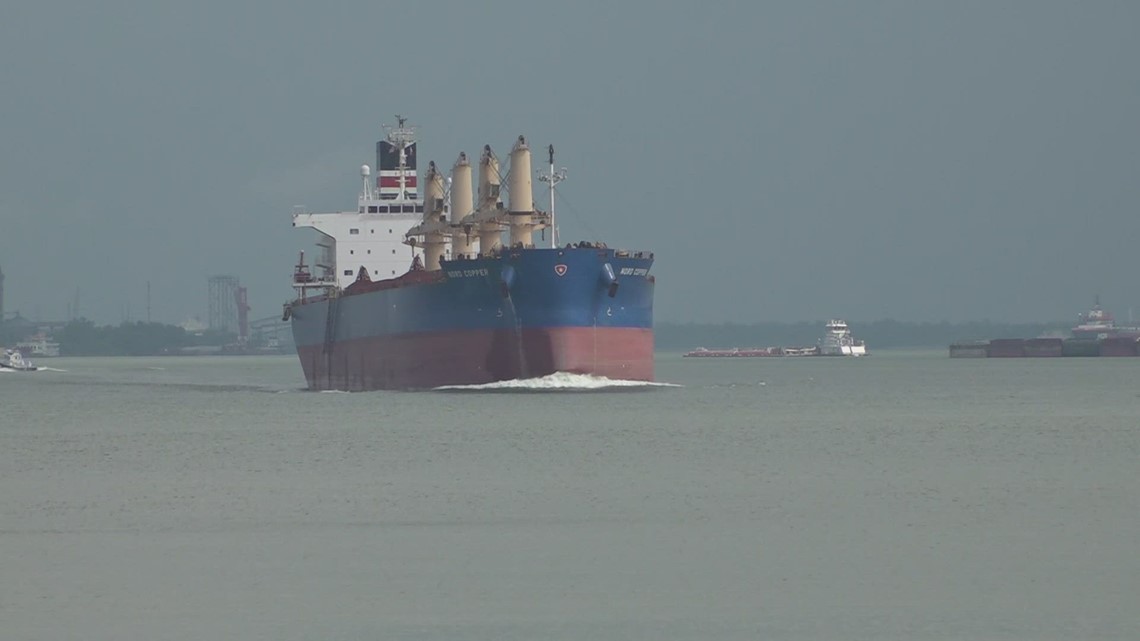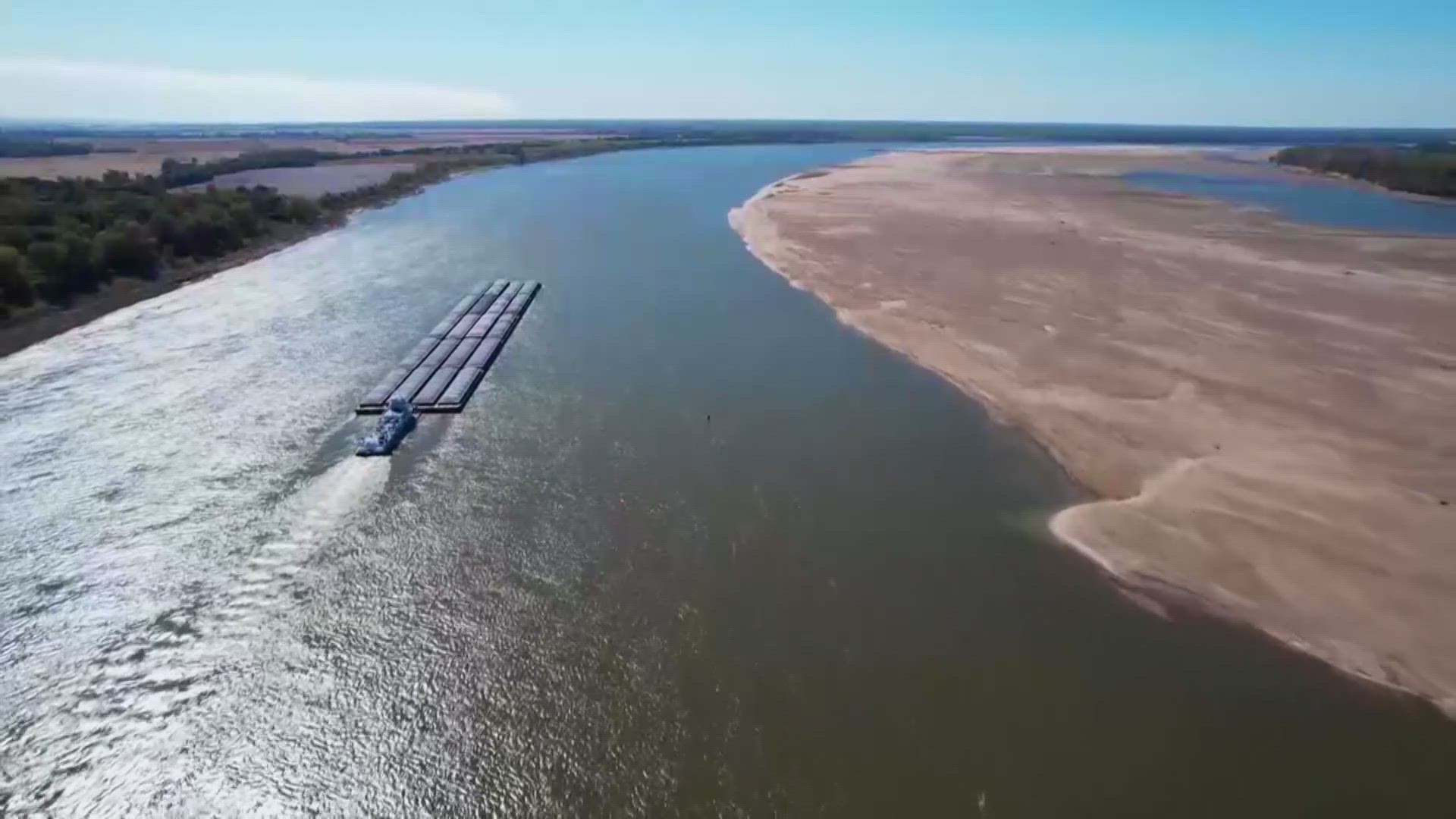NEW ORLEANS — We're learning much more about the saltwater intrusion emergency on the Mississippi River, and how local leaders are responding to keep the drinking water safe.
The Army Corps of Engineers says the saltwater wedge coming up the Mississippi River, from the Gulf of Mexico, is now a top priority at the highest levels of government.
Friday, they gave an update on plans to protect our drinking water.
So, here is what's happening. The Gulf's saltwater is pushing its way up the Mississippi River, not because of the lack of rain in Southeast Louisiana, but because low rainfall up in the Ohio Valley. And it's forecast to stay dry.
To fight back on gulf waters, The Army Corps of Engineers built an underwater sill. It’s a levee-type structure to hold the heavier saltwater back, but here's the problem.
“If current conditions persist, it will not be able to prevent over topping of the sill by salt water, but it can delay it.” explained Colonel Cullen Jones, the Commander of The Army Corps of Engineers, New Orleans District.
That means the saltwater will keep traveling upriver, hitting the water purification intake systems in more parishes, as happened before.
“During the extreme lows of 1988, we saw the saltwater wedge reach all the way up to Kenner, Louisiana. Based off the current forecast and projections, if no action is taken, we could potentially see the salt water wedge all the way to the French Quarter” said Col. Jones.
The projection is saltwater will over top the sill around September 22, and impact freshwater intakes at Belle Chasse by October 3.
“Since June 19th, we've been working on this situation. And it's been a trial beyond trial here, but we're going to succeed in this,” said Plaquemines Parish President Keith Hinkley.
In lower Plaquemines, already a million and a half liters of water have been delivered to 2,000 people. And there are other problems.
“Because of the drought, a lot of breaks in the lines, and when that happens your water pressure drops down," Hinkley said. "So, the water's not able to be pushed up to the second and third floor of your facilities. It's very corrosive. So, what we've experienced in the southern end of the parish is, some of the, your ice machines, coffee pots, just your appliances in general, it's very corrosive."


So, there are action plans: Dredging will make the sill 20 feet higher while keeping a lower channel for ship traffic.
As was done in 1988, fresh water will be brought on barges and mixed with the saltwater at water intake plants.
And special water filtration machines will be stationed at smaller water intake plants that remove the salt, grit, and dirt, taking a normal three step processing of water, to more like 10 steps.
The reverse osmosis water purification unit for saltwater is expected to be brought in on a truck and connected in the next few days at the east Pointe à la Hache water plant. Now they are working on getting more for other water plants.
► Get breaking news from your neighborhood delivered directly to you by downloading the new FREE WWL-TV News app now in the IOS App Store or Google Play.

